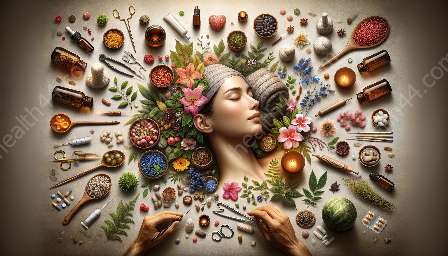Acupuncture and traditional Chinese medicine (TCM) have been intertwined for centuries, forming a comprehensive system of healing that continues to intrigue and contribute to the realm of alternative medicine today. From the philosophical foundations to the practical applications, the synergy between acupuncture and TCM runs deep, offering a holistic approach to well-being.
Understanding Traditional Chinese Medicine (TCM)
Traditional Chinese medicine is an ancient and intricate system of healthcare that encompasses various modalities, such as acupuncture, herbal medicine, dietary therapy, and more. At its core, TCM is rooted in the concept of balance and harmony within the body, mind, and spirit, as well as the harmonious relationship between humans and their environment.
TCM is influenced by the Five Elements Theory (wood, fire, earth, metal, and water), which is used to understand the interplay between different systems in the body and the environment. This elemental framework shapes the diagnosis and treatment strategies employed in TCM, including acupuncture.
The Principles of Acupuncture
Acupuncture, an integral part of TCM, involves the insertion of thin needles into specific points on the body to stimulate the flow of energy, or Qi, and restore balance. According to TCM principles, disruptions in the flow of Qi can lead to discomfort, illness, or disease. By accessing various meridians and acupoints, acupuncture aims to facilitate the smooth circulation of Qi, promoting overall well-being and alleviating ailments.
Connecting the Threads: Acupuncture and TCM
Acupuncture is firmly rooted in the philosophical and diagnostic frameworks of TCM. Its effectiveness is deeply intertwined with the holistic perspectives and treatment methods espoused by TCM. The following are the ways in which acupuncture and TCM are interconnected:
1. Holistic Approach: Both acupuncture and TCM embrace a holistic view of health, considering the interplay of physical, emotional, and spiritual aspects. The focus is on addressing the root cause of an ailment rather than merely treating its symptoms.
2. Energy Flow: The practice of acupuncture aligns with TCM concepts of Qi circulation and balance. Through the manipulation of acupoints, acupuncturists work to harmonize the flow of Qi, aiding the body in its natural healing processes.
3. Diagnostic Methods: Acupuncturists often employ TCM diagnostic methods, such as tongue and pulse assessment, to gain insights into the individual's constitution, imbalances, and disharmonies.
4. Treatment Modalities: TCM offers a range of therapies complementary to acupuncture, such as herbal medicine, cupping, and moxibustion, to address various health concerns.
The Modern Relevance
Today, acupuncture and TCM continue to be valued as alternative and complementary healthcare modalities. Their holistic approach, gentle yet effective nature, and ability to address a wide spectrum of ailments have garnered attention in the Western world.
Moreover, research has increasingly shed light on the physiological mechanisms underlying acupuncture, validating its effects on pain management, stress reduction, and the regulation of various bodily functions. As a result, acupuncture and TCM have carved a solid niche in the realm of alternative medicine, appealing to individuals seeking natural, integrative approaches to health and well-being.
Conclusion
The intricate relationship between acupuncture and traditional Chinese medicine enriches the landscape of alternative medicine, offering a profound understanding of the body-mind connection and the integrative nature of healing. By delving into the philosophical underpinnings and practical applications of acupuncture and TCM, individuals can cultivate a deep appreciation for these ancient modalities while recognizing their enduring relevance in the modern world.


